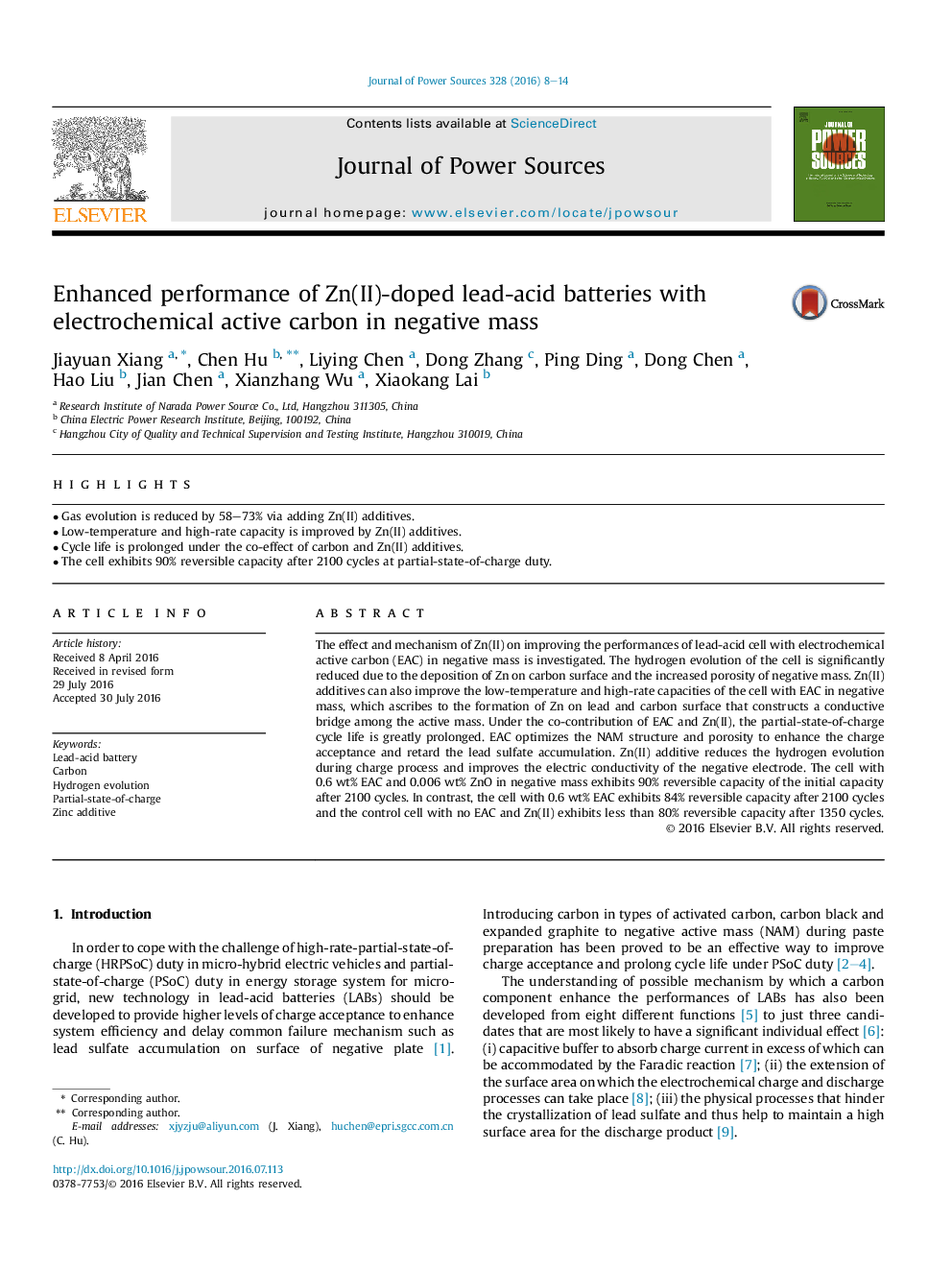| Article ID | Journal | Published Year | Pages | File Type |
|---|---|---|---|---|
| 7726993 | Journal of Power Sources | 2016 | 7 Pages |
Abstract
The effect and mechanism of Zn(II) on improving the performances of lead-acid cell with electrochemical active carbon (EAC) in negative mass is investigated. The hydrogen evolution of the cell is significantly reduced due to the deposition of Zn on carbon surface and the increased porosity of negative mass. Zn(II) additives can also improve the low-temperature and high-rate capacities of the cell with EAC in negative mass, which ascribes to the formation of Zn on lead and carbon surface that constructs a conductive bridge among the active mass. Under the co-contribution of EAC and Zn(II), the partial-state-of-charge cycle life is greatly prolonged. EAC optimizes the NAM structure and porosity to enhance the charge acceptance and retard the lead sulfate accumulation. Zn(II) additive reduces the hydrogen evolution during charge process and improves the electric conductivity of the negative electrode. The cell with 0.6Â wt% EAC and 0.006Â wt% ZnO in negative mass exhibits 90% reversible capacity of the initial capacity after 2100 cycles. In contrast, the cell with 0.6Â wt% EAC exhibits 84% reversible capacity after 2100 cycles and the control cell with no EAC and Zn(II) exhibits less than 80% reversible capacity after 1350 cycles.
Related Topics
Physical Sciences and Engineering
Chemistry
Electrochemistry
Authors
Jiayuan Xiang, Chen Hu, Liying Chen, Dong Zhang, Ping Ding, Dong Chen, Hao Liu, Jian Chen, Xianzhang Wu, Xiaokang Lai,
